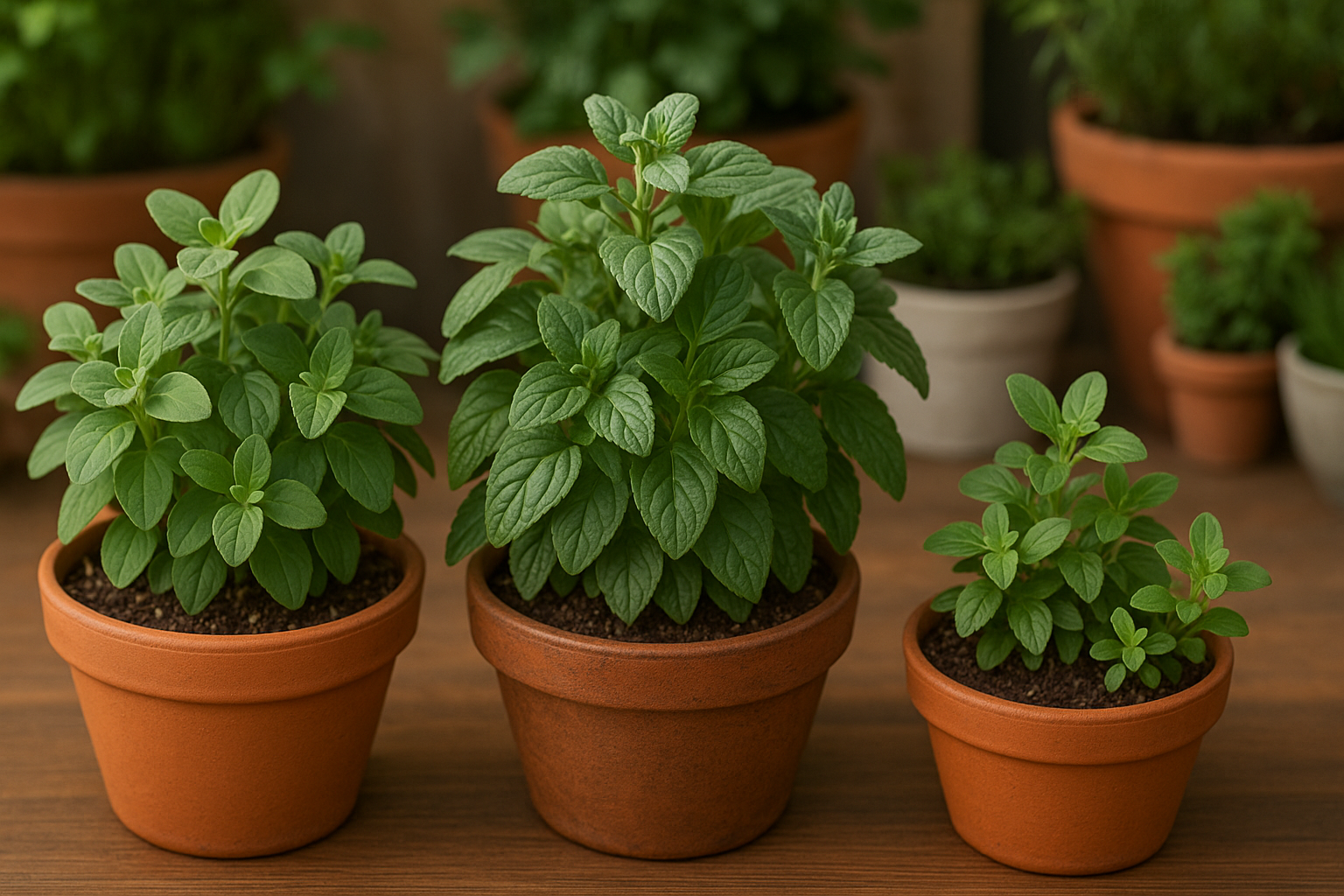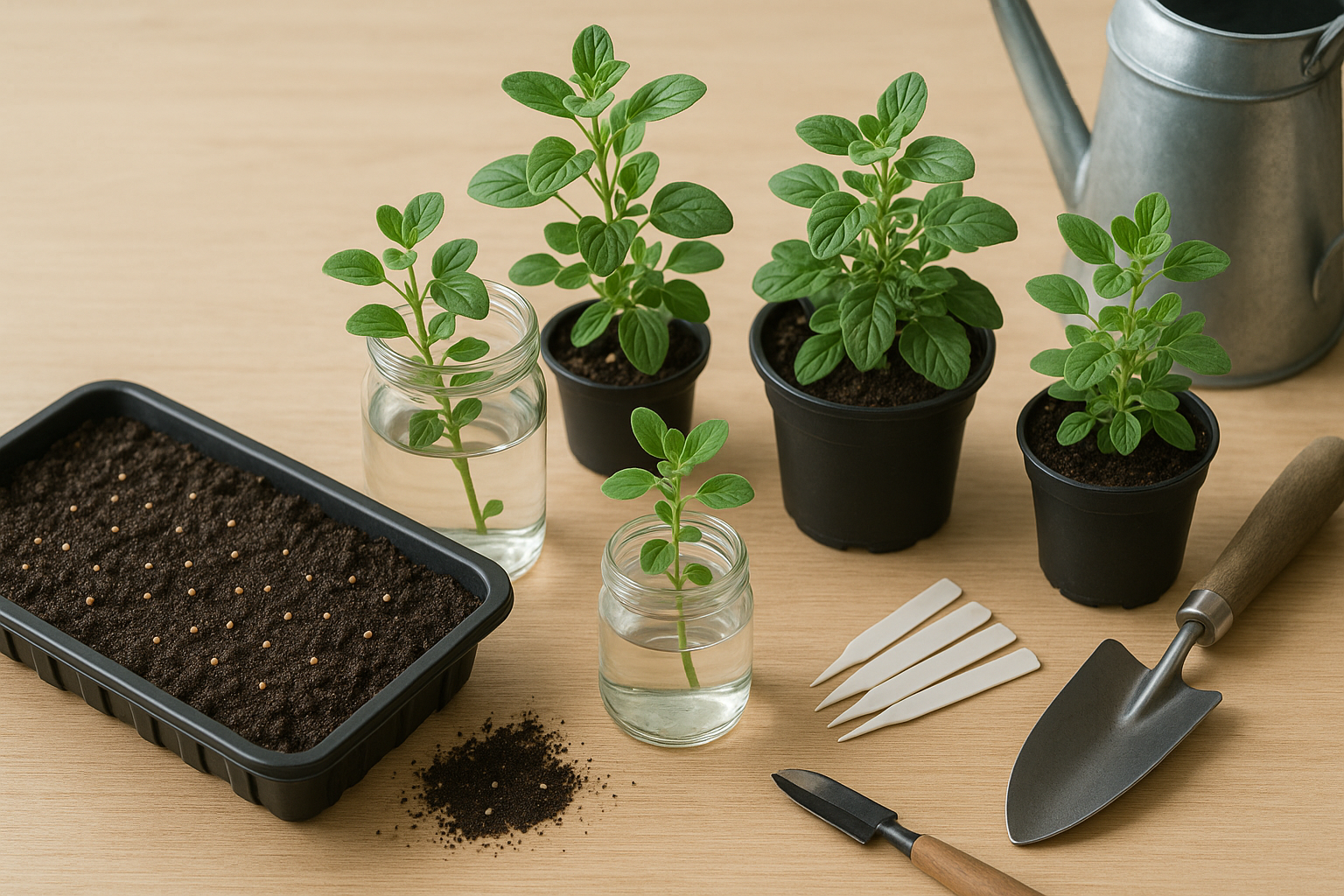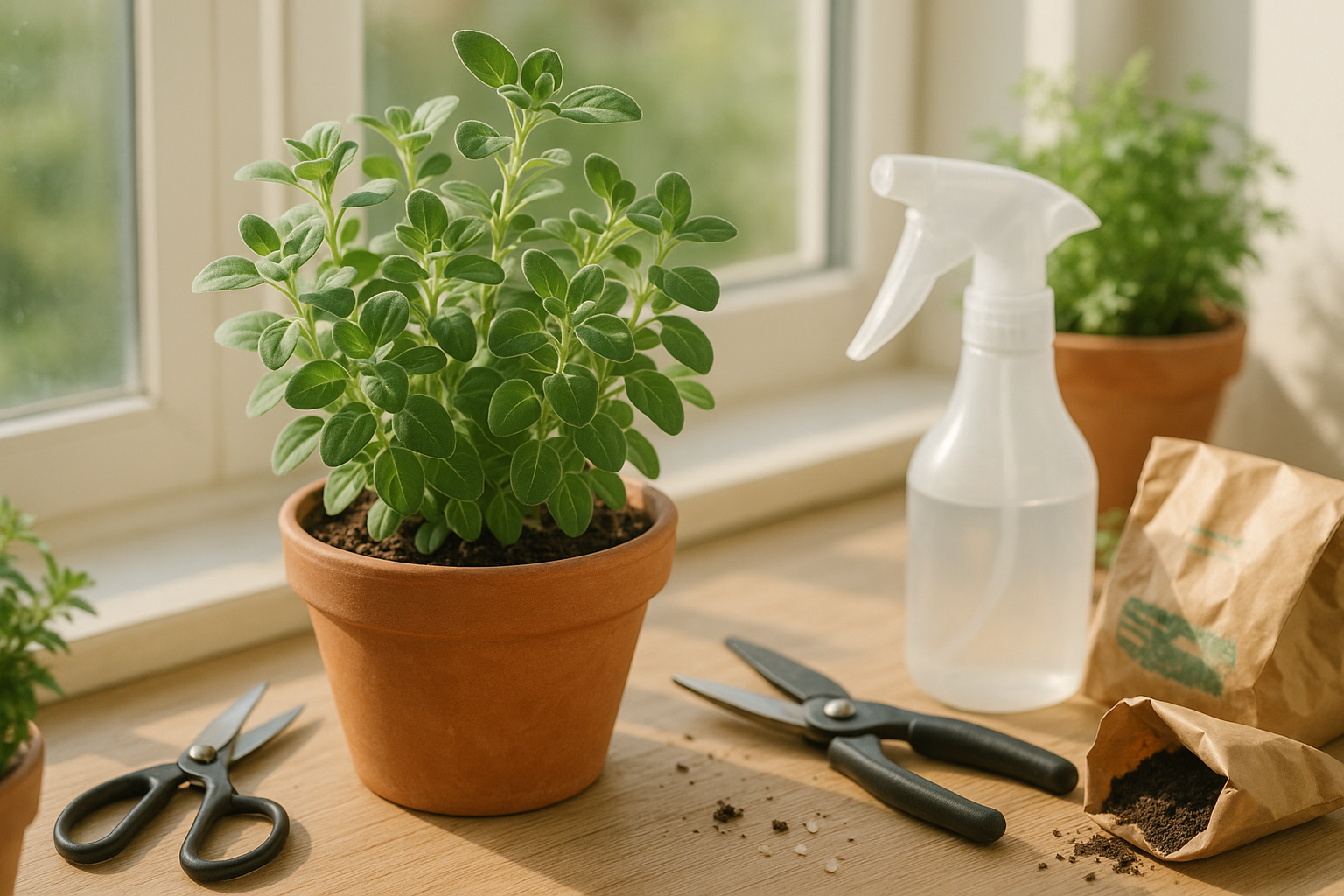Introduction to Marjoram
Growing marjoram indoors is a rewarding way to bring fresh, vibrant flavor straight to your kitchen all year round. Marjoram—an aromatic herb in the mint family—stands out for its delicate, sweet, and slightly citrusy taste, making it a favorite among cooks and herbalists alike.
With soft, oval leaves and compact growth, it’s both easy to manage and attractive, thriving in pots on sunny windowsills or under grow lights. Long favored by gardeners for its adaptability, marjoram is highly popular for home cultivation in containers—perfect indoors, where you can control temperature and light for optimal growth.
Beyond its appeal as a fresh culinary herb, marjoram is cherished for its aromatic qualities, infusing homes and dishes with a pleasant, soothing scent. Traditionally, it has also been valued for its medicinal properties, believed to offer soothing effects for digestion and stress. With just a bit of attention, anyone can enjoy the benefits of marjoram year-round.
Types of Marjoram and Which to Grow

When choosing marjoram for your garden or kitchen, it helps to know the main varieties: sweet marjoram, wild marjoram (also known as oregano), and pot marjoram.
Sweet marjoram is the most common kitchen variety, prized for its mild, sweet, and slightly floral flavor that complements soups, salads, and poultry dishes. It grows as a tender perennial in warmer climates but is often treated as an annual elsewhere because it’s sensitive to frost.
Wild marjoram, or oregano, packs a punch with its bolder, more robust, and slightly bitter flavor, making it a staple in Italian and Mediterranean cooking—think pizza, tomato sauces, and grilled meats. It’s a hardy perennial, thriving in a range of conditions and spreading vigorously, which makes it ideal if you want a low-maintenance herb.
Pot marjoram offers a flavor profile somewhere between sweet marjoram and oregano, with subtle spice and floral notes. It’s compact, making it great for containers, and versatile enough for both culinary and ornamental use.
For most home cooks, sweet marjoram is a superb all-rounder, while gardeners who prefer hardier plants may opt for oregano. If space or versatility is key, pot marjoram is a charming, easy-to-grow choice.
Starting Marjoram: Seeds, Cuttings, or Transplants

When it comes to starting marjoram in your garden, you have three main options: growing from seed, using cuttings, or planting transplants.
Starting marjoram from seed is affordable and gives you a lot of control over the process, but germination can be slow and uneven. Seeds need light to sprout, so gently press them onto moist soil rather than covering them.
If you’re looking for a quicker harvest, taking cuttings from an existing healthy plant is a great choice. Simply snip a non-flowering stem, remove the lower leaves, and root it in water or moist potting mix. Cuttings usually root within a couple of weeks and produce a true copy of the parent plant, but you’ll need access to an established marjoram plant to use this method.
For an easy, no-fuss start, buying marjoram transplants from a reputable nursery saves time and lets you skip the most delicate growth stages, though it can be more expensive.
For the best results:
- Buy seeds from trusted suppliers with good germination rates.
- Select sturdy, vibrant transplants at local garden centers—avoid any with yellowing leaves or signs of stress.
- If possible, check online ratings for your supplier to ensure you’re getting healthy, vigorous plants.
Ideal Growing Conditions: Soil, Light, and Water
Marjoram thrives best in well-draining soil with a light, sandy texture and a slightly alkaline to neutral pH, ideally between 6.5 and 7.5. Good drainage is crucial—waterlogged roots quickly lead to rot, so always blend in organic matter like compost or sand if your soil is heavy or clay-based.
When it comes to sunlight, marjoram loves full sun, needing at least six hours of direct light outdoors for healthy growth and strong flavor. Indoors, place pots on sunny windowsills, rotating them every few days for even exposure. If you only have spots with partial shade, your marjoram can manage but might grow leggier and less aromatic.
Watering is another key: let the soil dry out slightly between waterings, as marjoram is drought-tolerant and dislikes sogginess. Avoid common mistakes like daily watering or letting pots sit in saucers of water—roots need air just as much as moisture.
Ground-planted marjoram generally requires less frequent watering than container-grown plants, which dry out faster, especially during summer heat. For containers, ensure pots have drainage holes and use a potting mix formulated for herbs.
Marjoram prefers warm temperatures; aim to keep it above 60°F (16°C) and bring pots indoors if temperatures drop below 40°F (4°C), as it’s sensitive to frost. With these tips, you’ll enjoy lush, aromatic marjoram whether your garden is inside or out.
Caring for Marjoram Plants
Marjoram plants thrive with regular, attentive care, and a few simple routines will keep them healthy and productive. Start by feeding your marjoram every 4-6 weeks with a balanced, diluted liquid fertilizer—this supports lush leaf growth without overwhelming the plant.
Keep the soil tidy by pulling weeds regularly, as these can compete for nutrients and invite pests. For pest monitoring, check the undersides of leaves weekly for tiny insects like spider mites or aphids; if found, rinse with a gentle spray of water or use insecticidal soap as needed.
Pruning is crucial for bushy, full plants: once your marjoram reaches about 4 inches tall, pinch off the growing tips between your fingers to encourage branching. Repeat this process throughout the season, cutting back stems by one-third after the first flush of growth or blooms. If your plant becomes leggy, gently tie main stems to a small support to keep them upright.
Watch out for powdery mildew, especially in damp conditions; improve airflow by spacing plants well and removing any affected leaves promptly. With these easy steps, your marjoram will reward you with flavorful, long-lasting harvests.
Harvesting and Storing Marjoram
The best time to harvest marjoram is just before it flowers, when the leaves are at their most aromatic—typically in the late morning after the dew has dried but before the sun gets too hot. Use sharp scissors or garden shears to snip stems about two inches above the base, taking care not to cut more than a third of the plant at once. This encourages healthy regrowth and lets you enjoy multiple harvests throughout the season.
To dry marjoram, tie small bunches with string and hang them upside down in a warm, well-ventilated area out of direct sunlight. Once the leaves are dry and crumbly, strip them from the stems and store them in airtight containers away from light and heat to preserve their flavor.
For freezing, chop the leaves and place them in ice cube trays with a bit of water or olive oil—this makes it easy to grab a serving for soups or sauces later.
If you prefer storing marjoram fresh, wrap unwashed stems loosely in a damp paper towel and place them inside a resealable bag in the fridge, where they’ll stay fresh for about a week.
Regular, careful harvesting paired with these storage techniques ensures you’ll always have flavorful marjoram at your fingertips—and thriving plants for seasons to come.
Easy Ways to Use Homegrown Marjoram
Homegrown marjoram is a versatile herb that brings a fresh, slightly sweet flavor to countless dishes. In the kitchen, try adding chopped marjoram leaves to roasted vegetables, homemade salad dressings, or marinades for chicken and lamb.
Its delicate flavor also shines as a pizza or soup garnish—just sprinkle it on right before serving for a burst of aroma. If you enjoy Italian or Mediterranean cuisine, marjoram blends well with tomatoes, beans, and olive oil-based dishes.
Beyond cooking, people have traditionally used marjoram for its soothing properties; you can steep it as a calming tea or add dried leaves to homemade potpourri for natural air freshening. Even infusing marjoram into olive oil creates a fragrant dip or salad booster.
Experiment by mixing marjoram into scrambled eggs, vinaigrettes, or even herb butters to upgrade everyday meals and introduce subtle, pleasant herbal notes into your routine.
